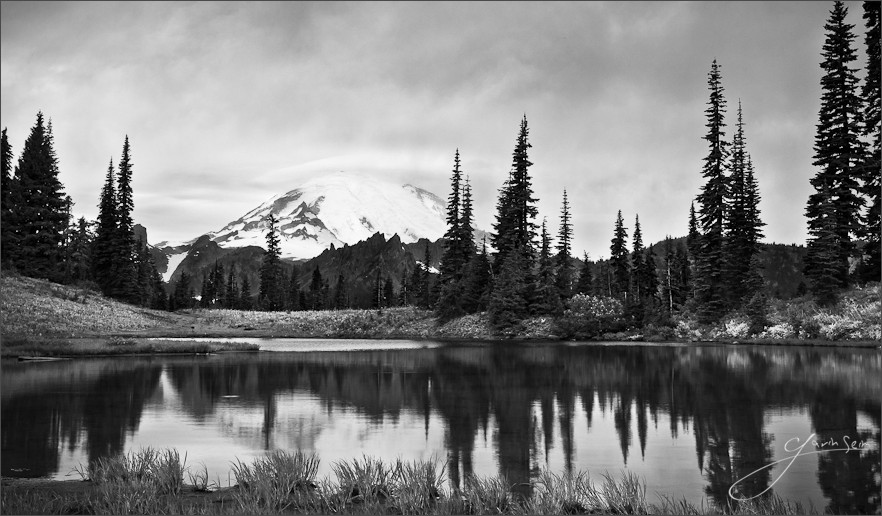
Mountains are something that never quite grow old. But they don’t always cooperate with my whims. Clouds and mists and empty skies,this was one of those days. Sort of.
We headed up the mountain around sunset. A group of photographers and I were out camping that weekend for an event I had organized. I was hoping for one of those radiant late summer sunsets, but not today. Oh, it’s beautiful and peaceful and all, but that does not mean the light was doing exactly what I wanted.
Still, even on the days that seem less than perfect, there is light. Light that has a subtle beauty all it’s own, especially if you catch it at the right time. Well, there was light on those peaks, and there were even dramatic clouds mixed in with that sky that at a glance appeared a bit boring. They kept peeking out as they blew past the peaks, and I waited for them. I think there was a song in that light after all.
Release details: Prints available. Contact the gallery. Learn more about prices. Available prints…
- 50 inch Master Original on Canvas – Limited edition of, 1
- 40 inch Signature Canvas – Limited Edition of, 25
- 36 inch Signature Art Print – Limited Edition of, 50
- 24 inch open edition mounted print
For photographers. How it was made… 
Canon 5D MK2, 17-40L 4.0 @40mm, f13, ISO160, 1/3 sec.
This is one of those frames about which I was unsure at first. I set up the composition and then took quite a few frames, as I also wanted to make a silver time lapse (link coming soon). The clouds were blowing up on the mountain so things were constantly changing, giving me a chance to find something.
We didn’t get those radiant shafts of light or peaks that just break out and dance. Still, this is something I’ve been wondering about. Nothing beats good light. But not all good light has to reach out and grab you. Does it? I think there is ideal light for you. A light that may fit your pre-conceptions or visualization of the scene. But is there ever really bad light if you adapt your visualization to what you have instead of what you want and if you have the experience to make it happen? I think maybe not.
This was mild light, but I was still able to pick a frame that had the best it offered. The lenticular clouds above the mountain, some mottled texture in the gray. But even then, it did not jump out. I made the best frame I could, then went to work back at the studio to bring out those real world subtitles into the final print.
The first key here was the LR process. I worked with my presets, then tweaked the channels further, pulling as much definition in the sky as possible while leveraging green colors that would give me a vibrant foreground. I was starting to see potential, and I actually made a new preset from the resulting process for Silver Shadows2.
Next came the burn and dodge to bring about what I had visualized. I harp on this a lot, but good tone control is essential to the final process. The more subtle light is, the more carefully I have to burn and dodge. I prefer when the tonal values appear more natural in contrasting balance, but even when they don’t, the image can still be developed. I take this same approach on color or black and white. I worked the highlights, mid tones, and shadows in PS little by little, bringing out edges, light, and textures, making sure I did not go to far and blow out highlights or make elements too black.
Finally, I went back to LR for a few final tweaks, sharpening and the like. I like to work in that order: primary edit on RAW file in LR, detail work in PS, then back to LR for any small global tweaks before the print/web final. However, I always work as as much as possible on that original file because I can keep more quality that way.
I did not do perfectly on this image. For one because I did not fully manage it on the 4×5. My film plate came after this when the light was less ideal. Second, because even though I was on the tripod, this digital file does not feel quite as crystal sharp as I would have liked. Both are things to work on for next time. But at day’s end, I have an image that conveys my vision of this scene, and one that should print nicely.
Gavin
